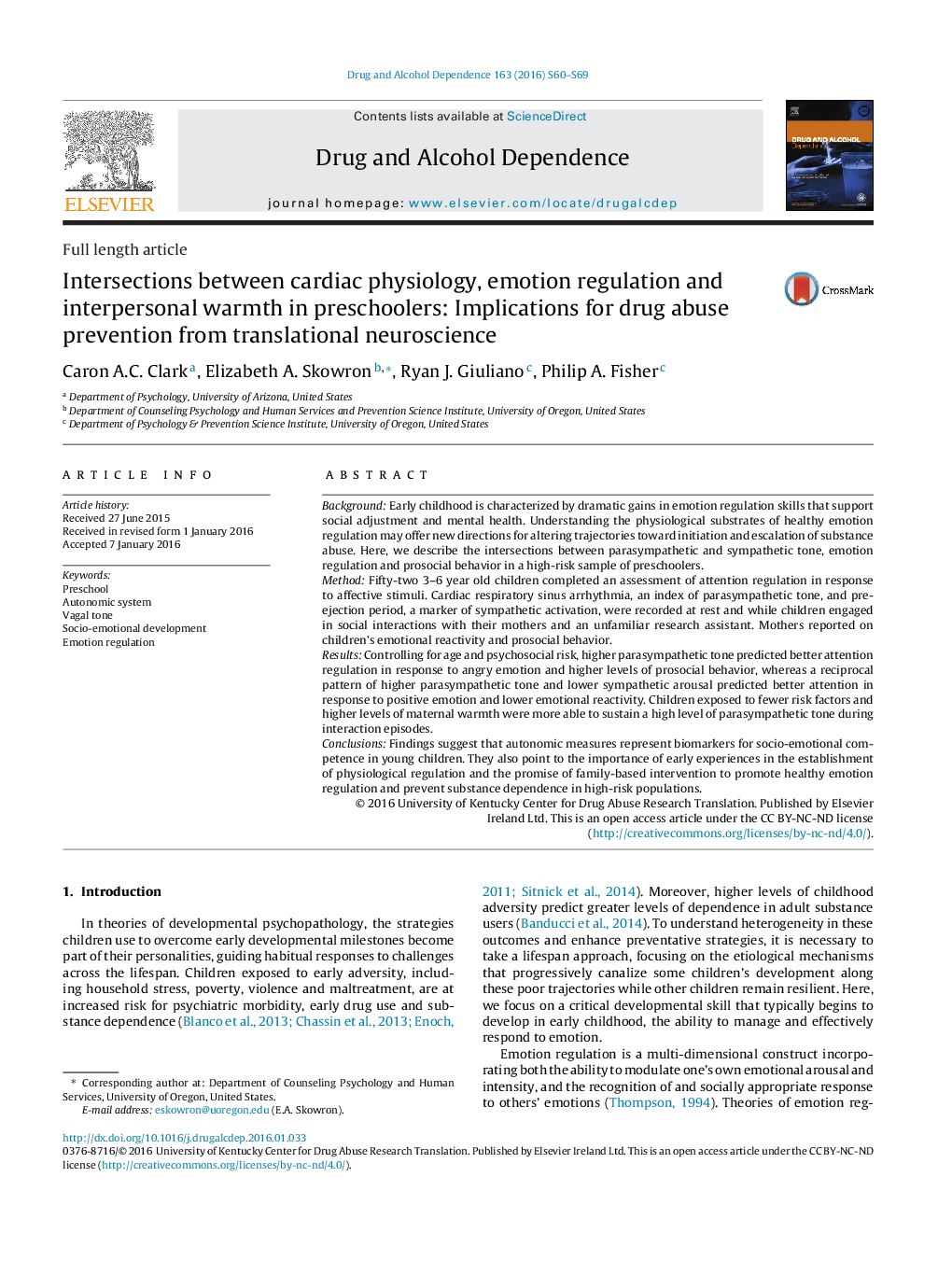| کد مقاله | کد نشریه | سال انتشار | مقاله انگلیسی | نسخه تمام متن |
|---|---|---|---|---|
| 1069695 | 949278 | 2016 | 10 صفحه PDF | دانلود رایگان |
• Higher parasympathetic tone predicts prosocial competence in at risk preschoolers.
• Parasympathetic and sympathetic measures reciprocally predict emotion regulation.
• Children at lower social risk had higher parasympathetic tone during social interactions.
• Early familial experiences may shape the physiological regulation of emotion.
• The autonomic system is a promising target for substance use prevention efforts.
BackgroundEarly childhood is characterized by dramatic gains in emotion regulation skills that support social adjustment and mental health. Understanding the physiological substrates of healthy emotion regulation may offer new directions for altering trajectories toward initiation and escalation of substance abuse. Here, we describe the intersections between parasympathetic and sympathetic tone, emotion regulation and prosocial behavior in a high-risk sample of preschoolers.MethodFifty-two 3–6 year old children completed an assessment of attention regulation in response to affective stimuli. Cardiac respiratory sinus arrhythmia, an index of parasympathetic tone, and pre-ejection period, a marker of sympathetic activation, were recorded at rest and while children engaged in social interactions with their mothers and an unfamiliar research assistant. Mothers reported on children’s emotional reactivity and prosocial behavior.ResultsControlling for age and psychosocial risk, higher parasympathetic tone predicted better attention regulation in response to angry emotion and higher levels of prosocial behavior, whereas a reciprocal pattern of higher parasympathetic tone and lower sympathetic arousal predicted better attention in response to positive emotion and lower emotional reactivity. Children exposed to fewer risk factors and higher levels of maternal warmth were more able to sustain a high level of parasympathetic tone during interaction episodes.ConclusionsFindings suggest that autonomic measures represent biomarkers for socio-emotional competence in young children. They also point to the importance of early experiences in the establishment of physiological regulation and the promise of family-based intervention to promote healthy emotion regulation and prevent substance dependence in high-risk populations.
Journal: Drug and Alcohol Dependence - Volume 163, Supplement 1, 1 June 2016, Pages S60–S69
